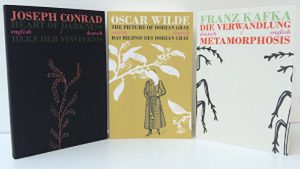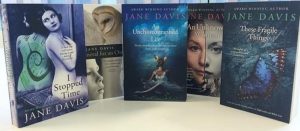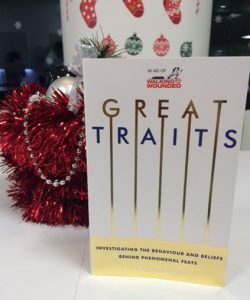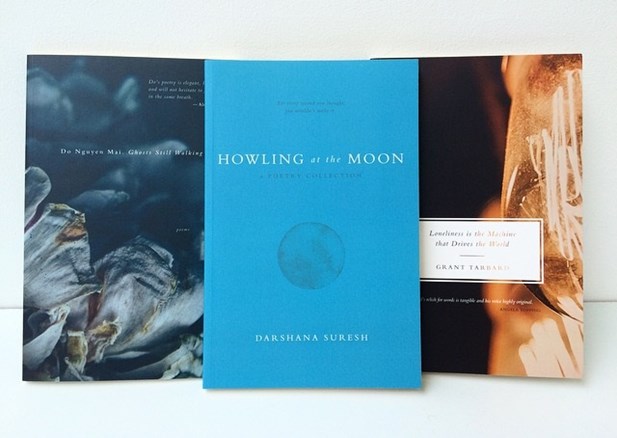
We first printed for Platypus Press back in February and are always so excited to see their beautiful books arrive on our desks. With three print books behind them, we thought we would pick their brains about their publishing journey so far…
What was the inspiration behind Platypus Press?
Both of us had written in various forms at university and so there came a point a few years ago when we started to gravitate towards online writing spaces. But, as enjoyable as that was for us, I think our desire to curate was also pushing itself to the front, and so, one day we discussed starting a press and moved forward from there. With my own experience in design, and our joint interest in language and curation, it seemed to present us with a bizarre moment of clarity: publishing suddenly made sense.
How did you come up with your name and logo?
The name itself came about from a split-second of inspiration: a platypus is mentioned in an episode of the TV show Sports Night (which we’re big fans of). That,  tied with our love for alliteration, seemed to work, and the name was sealed in those few seconds.
tied with our love for alliteration, seemed to work, and the name was sealed in those few seconds.
When I was putting together the logo, I knew I wanted something simple that could be used on the books, as well as online and in promotional materials. So, primarily, it had to be versatile, uncomplicated, and legible at a variety of sizes. I gravitated to the idea of using a pilcrow specifically due to a few things, (a) it looks like two reversed P’s and (b) its obvious correlation to literature and publishing.
Why do you focus mainly on debut poetry collections?
As a young company we felt drawn to other creatives taking their first steps. We feel we can offer them something that is usually reserved for mid-career poets: time and dedication. We will spend as much time on a debut collection as we would on someone on their fourth or twentieth book—all of our author’s words are important to us.
How important do you think poetry is and is poetry having a comeback?
I don’t think poetry has ever gone away per se, but with the continuing growth of the internet it has definitely seen a more public resurgence. It’s part of the reason we started WILDNESS (our online literary journal), there are just so many voices to be heard and we want to play (however little) a part in that chorus.
How do you choose your new writers? What is it about their work that catches your interest?
 This is something Michelle touched upon in her first Editor’s note for WILDNESS:
This is something Michelle touched upon in her first Editor’s note for WILDNESS:
… it’s that we know what we want but we can’t explain it, so we can’t ask you for it.
… because there is no way to explain what any of us truly want. Only we know what it is that makes us ache…
The same applies to Platypus, our poets range considerably in age (from teenagers to an octogenarian), in background and circumstance. And it is these things that infuse their poetry with that certain something that touches us. We cannot help but be driven by what we feel, and I hope it’s what will ultimately help drive us forward.
What made you decide to go to print?
When we initially set up the press we were fresh to the whole process, and because of this we decided to (a) publish our own collections first and (b) use Amazon’s CreateSpace service. The primary reason for this was naivety; we wanted to see if we were actually competent enough to deliver what we knew we would have to (and wanted to) for our future authors.
After publishing our first five books we decided we’d nurtured the basic skills we needed to approach a print firm to work with. During that period we’d spent lots of time getting quotes and print examples, and eventually discovered Clays through Salt Publishing.
Your covers are always beautiful. How do you come up with a design concept for each cover?
Thank you. There’s usually a few steps to it (and this is fairly obvious and boring), I try to determine a vibe from the poems themselves, as well as any particular feeling from the author’s online presence. I also have a large collection of inspirational images (architecture, film posters, web design, as well as other book covers), which have at one time or another seeped into my consciousness and no doubt inform Platypus’ aesthetic.
Like most aspects of the business, it all comes down to what feels right between the author and ourselves.
Each cover is different but has a similar style. How important is this to keep the Platypus Press branding consistent across all your titles?
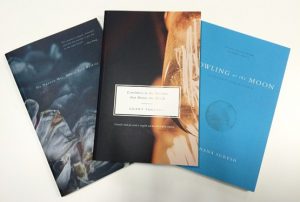 Yes, at this time we definitely want to create a familial feeling between the books. We achieve this by using the same or similar fonts for the collections, and in the case of several of them, the same thematic stylings. Obviously, as the company grows and this stylistic similarity isn’t required, we fully intend to broaden the design language we use.
Yes, at this time we definitely want to create a familial feeling between the books. We achieve this by using the same or similar fonts for the collections, and in the case of several of them, the same thematic stylings. Obviously, as the company grows and this stylistic similarity isn’t required, we fully intend to broaden the design language we use.
How are you finding the Clays experience?
Actually, the whole experience has been great. Being relative novices with regards to the industry, Clays have been nothing short of saintly towards my overly long, multifaceted and, at times, quixotic emails. Both Rebecca and Georgina have been such a calming influence on the obvious paranoia that can develop when beginning a new project.
Also, the quality of the books have impressed both us and our authors (as well as the readers). And to be honest, that’s all we could we ask for.
What is your top advice to new indie publishers?
Research. It is the most important thing when it comes to all aspects of publishing—authors, print firms, marketing, reviewing. Every single element of being an indie publisher requires extensive research.
Aside from that, the only other thing I can think of, and to me (us) this is a given: love the work (and people) you’re publishing. There’s very little point otherwise.
What are your next steps?
We’ve put in place a plan for the next year or so, and we’re nearing the end of what we’ve internally called phase one.
This phase primarily focused on poetry, and predominately (as you’ve noted) collections from new writers. And whilst we intend to continue along a similar path (mixing debut with mid-career poets), we are planning on releasing a broader range of books. Which, at the moment include a deeply moving memoir/essay collection, another short-story collection, as well as hopefully a novella sometime in 2017.
We just want to continue to grow as a publisher and keep putting out books we love and want others to love as much as we do. Our interests are fairly broad and so I hope we’ll end up having an interesting and eclectic catalogue given time.
Click to follow Platypus Press on Facebook, Twitter, Tumblr, or find them at platypuspress.co.uk!


